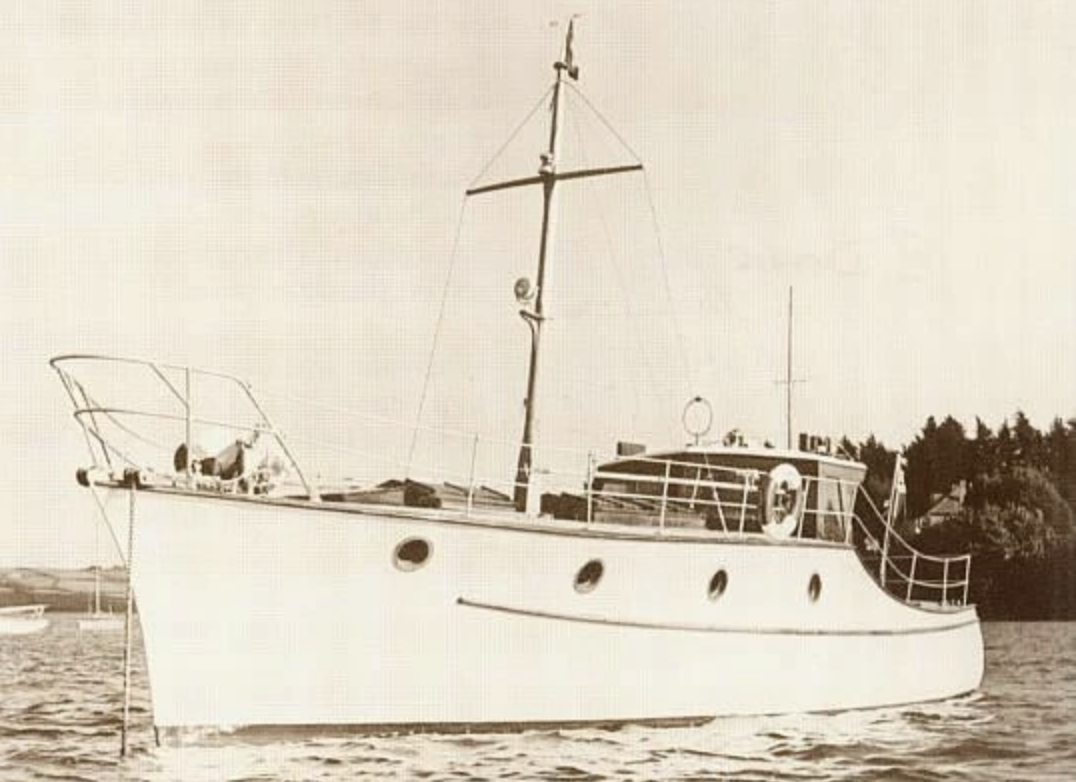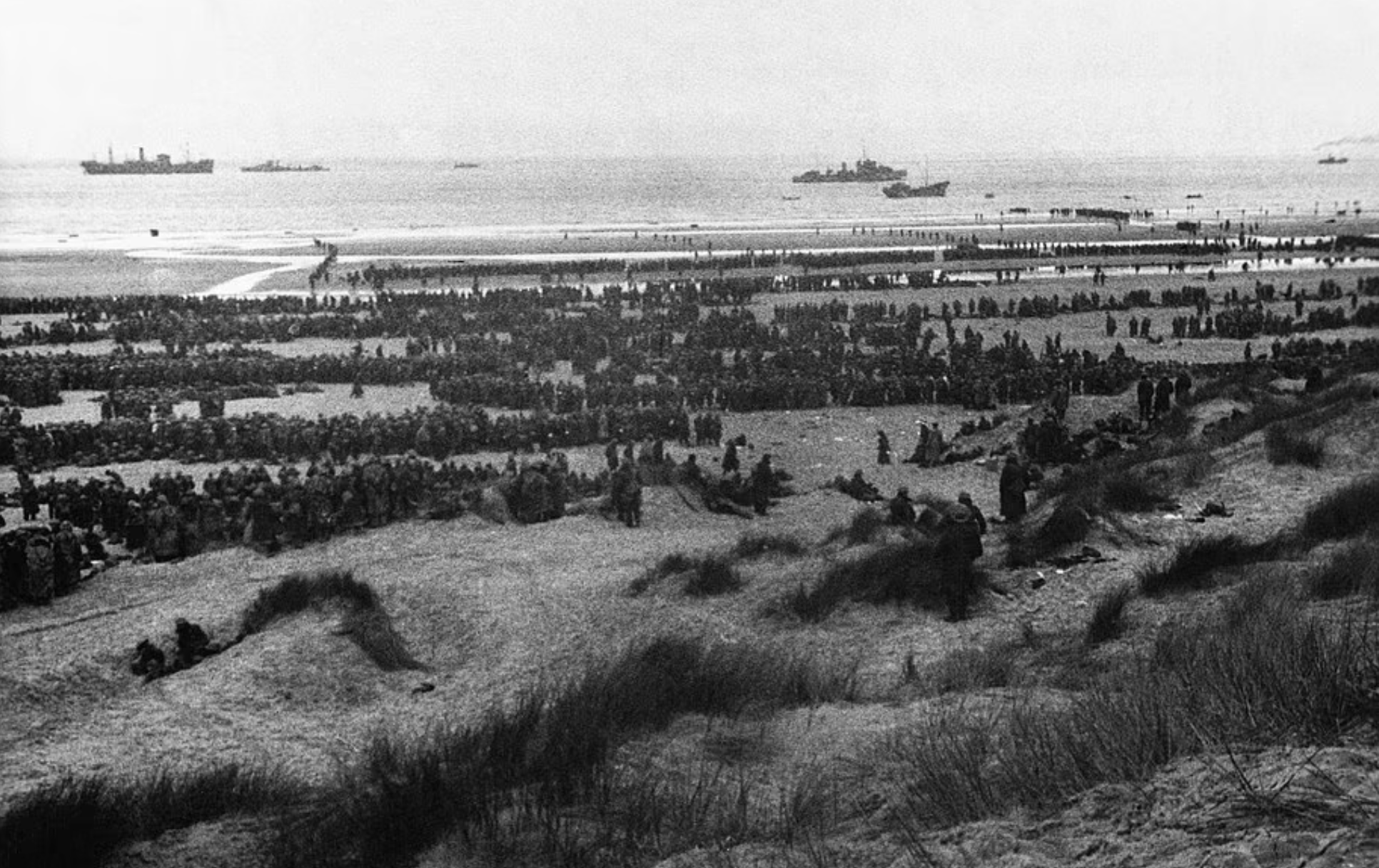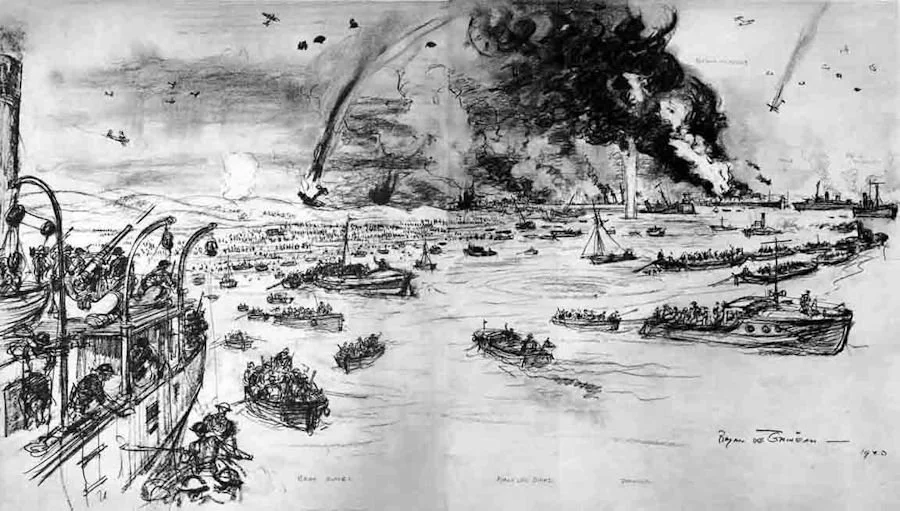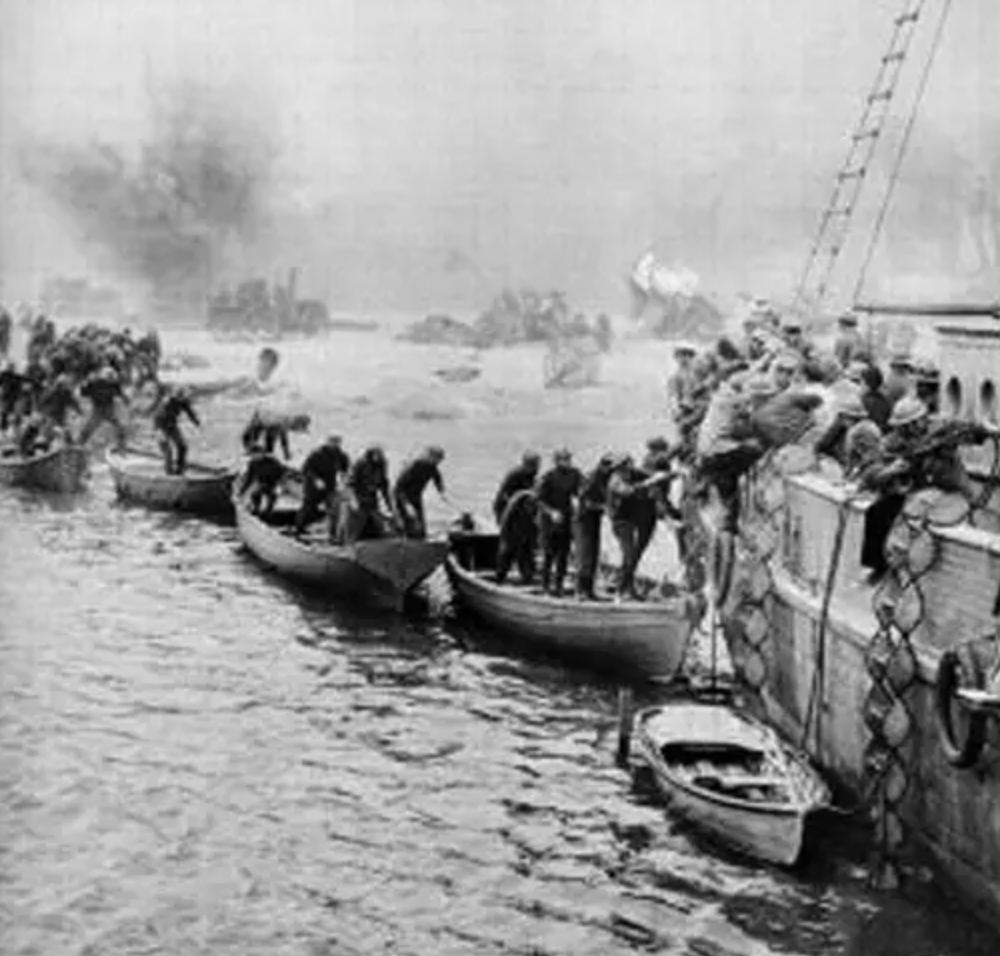Tom Tit
By Malcolm Lambe in Paris
Yesterday I took the TGV up to Dunkirk from Paris to meet up with a small fleet of wooden “Dunkirk Little Ships” coming across from the U.K. for the 83rd commemoration of the Evacuation of Dunkirk this week in May 1940. I arrived at the Yacht Club du Mer Nord to find...no Little Ships. They had cancelled due to a predicted gale and no-one had thought to inform me. Great.
Dunkirk was cold and windy, run-down and rather depressing so I aborted my mission, cancelled my hotel room, changed my rail ticket and scarpered back to Paris arriving at Gare du Nord in the six o’clock peak hour. (It was like something out of Fritz Lang’s “Metropolis”. I don’t recommend it to anyone with agrophobia.)
“What’s this got to do with Southern Wooden Boat Sailing Lambe?” you ask. Nothing really. But the following is a good yarn. About a wooden boat. With a small mast. And I’ve included a shot of Dunkirk Harbour showing the yacht club and the mole in the distance. No not Kylie Mole but the famous mole – the pier that most of the troops were evacuated from. This incidentally is the main port to enter the canal systems of France. You can go all the way down to the Mediterranean via canal if you have a shallow enough draft.
There is a certain mythology surrounding the evacuation of Dunkirk in May 1940. Partly driven by wartime propaganda like “Mrs Miniver” and “The Snow Goose” depicting civilians heading off to the Dunkirk beaches to rescue the hapless British and French forces. And perpetuated by the 2017 Christopher Nolan blockbuster “Dunkirk”.
(BTW “Mrs Miniver” was the highest-grossing film of 1942 and won six Academy Awards. Greer Garson plays Mrs Miniver whose architect husband Clem (Walter Pidgeon) volunteers to take his motorboat across The Channel to assist in the Dunkirk Evacuation.
At that stage The United States hadn’t entered the war and Nazi Propaganda Minister Joseph Goebbels wrote at the time “Mrs Miniver shows the destiny of a family during the current war, and its refined powerful propagandistic tendency has up to now only been dreamed of. There is not a single angry word spoken against Germany; nevertheless the anti-German tendency is perfectly accomplished.”)
Anyway...the romantic notion of plucky Brits dropping everything and jumping in their boats to pull the troops off the Dunkirk beaches is bull. The authorities didn’t allow it. And most of the troops were taken off from the mole and the harbour. Some were plucked off the beaches in small boats and ferried out to larger boats lying offshore. Maybe 20,000 out of the 338,000 rescued during those 10 days.
The truth is that the Naval Inspectors who rounded up the little boats in the early days of the crisis refused to let pleasure boaters like Mrs Miniver’s husband, Clem or Mr Bolton from Christopher Nolan’s 2017 film Dunkirk, pilot their own boats. It was simply too dangerous. The Luftwaffe and torpedo gunboats were running amok. There were also mines to contend with. So it was no picnic. No place for Harry from Accounting in his 20 foot Thames riverboat.
Drawing by London Illustrated News 'special war artist', Bryan de Grineau, 'from descriptions furnished by eye-witnesses’.
The authorities did requisition 850 privately owned boats but they turned them over to the Royal Navy, sometimes to officers and ratings out of the Naval Reserve and to professional seafarers who were called “civilians” by virtue of the fact they were not in the military. A lot of these boats didn’t go across under their own steam but were towed by larger vessels.
These men were Masters and crew of cross-channel steamers, skippers and deckhands from coasters and fishing boats, lifeboat, cockleboat, tugboat and yachtsmen – in other words, serious mariners.
Not many crews went to Dunkirk unaware of the dangerous conditions they were sailing into.
But...there were some civilian boats that headed out on their own without authority. This is one of them. Albeit with a professional crew. And yes Virginia it’s a wooden boat. With beautiful lines.
Ramsgate fisherman Ron Thomlinson was at the cinema one May day in 1940 when halfway through a film, a newsflash came up on to the screen:
"Anybody in Ramsgate trawlers, please report to the Admiralty Office at once."
As Ron recollected years later -
“I took no notice, because our trawler had no water in the boilers and no coal in the bunkers. Somebody nudged me in the back and said, "Ron, that means you!" "It can't mean me," I said, "Because we're blown down." But after the film I went down to the Admiralty Office, to find out what it was all about.
"What ship are you off?" they said. I told them I was the engineer on the “Tankerton Towers”.
"Could you go round and let the crew know to be down here at half-past five in the morning? Because we need a ship."
They didn't say why they needed it. I didn't know anything about Dunkirk. So I went round and by the time we got aboard at half-past five, there was steam blowing from the boiler, there was coal in the bunkers and there were two Lieutenants waiting for us. The Navy had done all that during the night. The Lieutenants asked, "What have you got on board?" We said, " Nothing." They said, "We'll have to find something to give the boys a cup of tea when they come on board." We didn't know what they were talking about.”
“Tankerton Towers” steamed to Dunkirk with Ron at the helm. After collecting hundreds of troops it was towed back to Ramsgate – North of Dover - with some fifty French and British soldiers after her propeller had been fouled.
At Dunkirk “I was concentrating on going into the pier. I didn't even moor up, I just kept the engine running and let them jump aboard. As soon as I got a boatload, I went out to the nearest ship, dropped them, and came back in. I just kept filling up, I had them sitting in the cockpit and on the deck. I couldn't say how many - 40, maybe 50. One poor lad could hardly walk, so we took him down to our cabin and I thought he might as well have my bunk. But when I looked round, the cabin was absolutely full - everybody had followed me down. An officer said to this lad, " Come on, get out of that bunk! I'm an officer!" So I said, "There's no such thing as officers in these circumstances!"
After the troops were disembarked at Ramsgate, Ron went home for a meal and to clean up. He then teamed up with his brother, Alan, and they went down to the Admiralty office in the harbour and volunteered to go again.
The Admiralty office sent them off in a tiny boat with a young Naval Officer who made them turn back when he found that they were taking him, safely they protested, the shortest route, straight across the Goodwin Sands. As they came back into Ramsgate Harbour, Ron saw “Tom Tit” tied up at the end of the breakwater and urged his brother to join him when he jumped across into her.
Their elder brother Fred was standing on the pier and saw what they were doing and warned them that one of the ship's engines had been on fire and it may not be too wise to take her, but before anyone could stop them, Ron and Alan had got under way and were again heading straight for the Goodwin Sands. As they were heading to the Sands they noticed a petrol leak which is what caused the original fire in the engine. They turned the engine off and repaired the leak. However due to the delay they had lost time with the tide running out. They touched the sea bed a few times before they cleared the shallows, but reached Dunkirk safely.
They filled “Tom Tit” up with soldiers and transferred them out to the big ships waiting further off shore. After some sixteen journeys a Sergeant Major on the jetty told them not to come back anymore because the Germans were on the pier. Ron and Alan told him they'd keep coming while he was still on the pier. On the last trip they persuaded the Sergeant Major to join them.
The following morning they arrived in Ramsgate and expected to be arrested for stealing “Tom Tit” but the Senior Naval Officer congratulated them and said he wished he could have had more like them.
Forty years later – in 1980 – Ron Thomlinson was having a drink in a pub when the Publican showed him a picture of a boat his brother had just bought. Though her name was now “Melinda Margot” Ron knew it was the vessel he had taken to Dunkirk and proved it when they found signs of a fire in the starboard engine.
“Tom Tit” is now a much-loved family boat based on the lower Thames. Her present owners are keen supporters of the Association of Dunkirk Little Ships and “Tom Tit” can be seen at most of the scheduled events.
BTW there is an Australian connection to Dunkirk Little Ships. Group Captain Graham MC AFC OBE of the RAF was flying sorties in Spitfire squadrons over The Channel and Dunkirk while his commandeered cruiser “Hopalong” was rescuing troops below. The vessel belongs to https://www.adls.org.uk/ - the mob I was hoping to meet up with this week. “Tom Tit” was to be with them and I was looking forward to going below to see if there was evidence from that engine fire of 1940. Oh well – c’est la vie. I don’t give a tomtit really.











